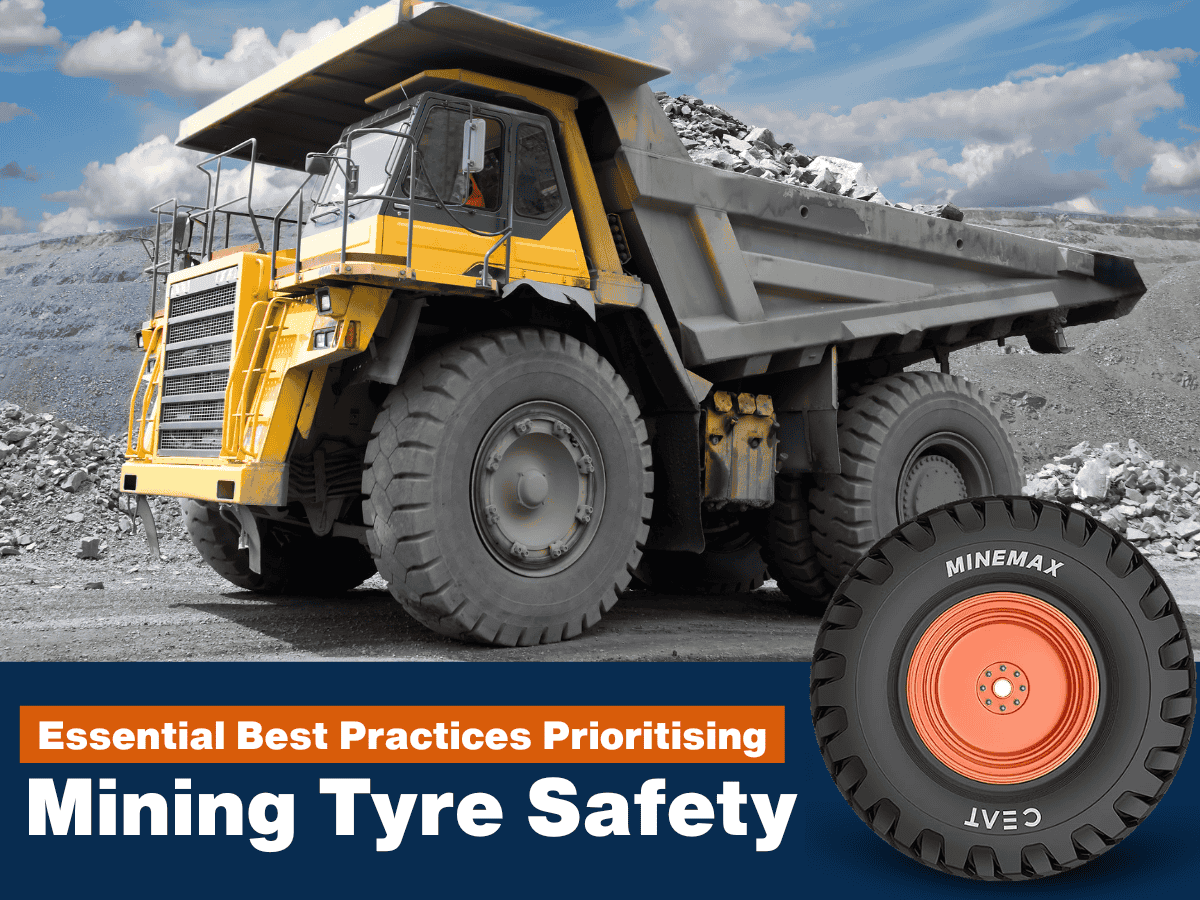ceat-speciality:blogs-tags/all,ceat-speciality:blogs-tags/tyre-care
Season Prep Starts with an Agricultural Tyre Check-Up
Tue, 4 Nov 2025 | PRODUCTS
Winter is not just a time for farmers to rest – it’s an opportunity. It’s the ideal window to inspect, repair, and plan for your agricultural tyre health before the busy season begins. In fact, a proper tyre check-up now can save you from breakdowns, extra costs and headaches when fields and roads call again.
Let’s walk through a full, actionable guide in simple steps — what to look for, how to act and when to replace. We’ll also touch on how CEAT Specialty (a well-known brand in agricultural tyres) fits into this picture.
Why Winter Is the Best Time for Tyre Maintenance
During active seasons, you’re busy in the field. Damage accumulates but often goes unnoticed until failure. Cold weather slows down rubber ageing and gives you time to spot structural issues before spring stress. Suppliers and workshops tend to have more availability in the off-season, making repairs or replacements easier. You ensure that once planting, harvesting, or heavy fieldwork begins, you aren’t delayed by tyre problems.
How to Do a Complete Agricultural Tyre Check-Up
Visual & Structural Inspection
- Look for cuts, bulges, cracks or impact scars on tread and sidewalls. These often signal deeper casing weakness.
- Even small cuts near the bead or shoulder can propagate under load.
- If you see a bulge or internal damage, that tyre likely needs professional evaluation.
- If the lugs are wearing more on one side, or the shape of wear is skewed, that signals:
1. Underinflation (edges wear first),
2. Overinflation (centre wear), or
3. Misalignment/geometry issues (tilt wear). - Transitions between field and road play a role — tyres should handle both demands.
- A tyre’s efficiency degrades when lug height falls below ~50% of original depth.
- For typical agricultural use, tyres often become worn out around 15 mm lug depth; for road use, about 10 mm is a common threshold.
- Use a depth gauge in multiple spots; track the lowest reading.
Inflation & Load Management
- Tyres must be inflated according to the load they carry and the surface (soft soil vs hard roads).
- Too low pressure → overheating, sidewall stress, faster wear.
- Too high pressure → reduced contact patch, slippage, and soil damage.
- During winter, temperature drops can reduce tyre pressure — check in the morning when it is coldest. (Temperature shifts cause pressure changes.)
- Overloading a tyre or having weight unbalanced across axles increases stress on the casing, accelerates ageing, and invites failure.
- Always follow the manufacturer’s load index for each tyre.
Geometry & Alignment Checks
Misalignment (toe-in, toe-out, and camber) leads to one-sided wear on lugs and shoulders. Check for:
- Uneven wear across left/right or inside/outside edges.
- Steering drift or pulling.
- Vibration or “shimmy” when moving.
Fix geometry early — it’s cheaper than replacing a tyre mid-season.
Repairs vs Replacement
Cold repair: Ideal for minor punctures (such as a nail or small foreign object). Use patches from the inside only when damage is limited.
Hot repair (vulcanised plugs/patches): For deeper cuts or perforations, hot repair offers stronger, more lasting patching.
Don’t repair if:
- The damage is near the sidewall or bead.
- The cut is too wide or exposes cords.
- There is a structural bulge or separation.
Replace when structural damage is too severe or when lug depth is too low for safe use.
Replace during winter, before high-season demand reduces availability and raises prices.
Having spares ready means minimal downtime.
Inspecting Rims & Seals
Rust, dents, or deformation on rims reduce the air seal and can leak or damage the tyre’s bead. Clean rims of residue, rust, or burrs. Ensure rims are straight and within spec. A good seal is as important as a good tyre.
Storage & Seasonal Handling Tips
If tyres remain idle during winter:
- Jack up the vehicle so tyres are off the ground to avoid deformation.
- Increase inflation slightly (per the manufacturer’s advice).
- Move the tyres periodically (rotate or shift) so the same spot isn’t always loaded.
- Store tyres on rims, upright or flat (but off the bare ground), in a dry, shaded, cool spot.
- Avoid direct sunlight — UV degrades rubber over time.
How CEAT Specialty Relates to This Process
CEAT Specialty is the agricultural and off-highway business line of CEAT, offering a wide range of farm tyres. We market many tyre sizes (around 500) for tractors, harvesting, and field use. One advantage: CEAT’s radial farm tyres provide a larger footprint and allow operation at lower pressure, reducing soil compaction — if you maintain them well. Using branded tyres like CEAT Specialty gives you access to official load & inflation tables, a replacement network, and trusted engineering.
Conclusion
A simple but thorough tyre check-up during the winter can pay big dividends come planting or harvest time. By visually inspecting for cuts or bulges, tracking lug depth, maintaining correct inflation, checking alignment, and deciding when repairs or replacements are needed — you protect your machinery, save money, and work with confidence.
For those using CEAT Specialty tyres, you also gain the benefit of technical support, warranty features, and a design tuned for agricultural use. Act now during the “off-season” to ensure tyres are ready for when the farm calls.







































































































































